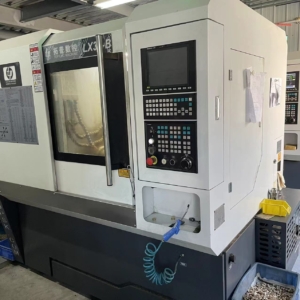Turning and milling composite machine tools
One of the primary functions of a turning and milling composite machine tool is the ability to perform both turning and milling operations in a single setup. This eliminates the need for multiple machine tools and significantly reduces the manufacturing time and cost. With a single machine, manufacturers can complete complex parts with intricate features that would traditionally require various setups and operations.
Its ability to perform both turning and milling operations in a single setup saves time, reduces costs, and increases efficiency. With enhanced accuracy and precision, manufacturers can produce complex parts with high-quality standards.
Sliding CNC Machine Tools
One of the primary advantages of sliding CNC machine tools is their ability to perform multi-axis machining operations. By incorporating additional axes of movement, such as the X, Y, and Z axes, these machines can carry out complex machining tasks with high precision. This capability allows for the creation of intricate and accurate parts, even with challenging geometries.
Another advantage is the increased range of machining operations that sliding CNC machine tools can perform. With their sliding mechanism, these machines can easily perform operations such as milling, drilling, turning, and grinding.
several problems that should be paid attention to in the processing of ordinary CNC lathes
1. Tool selection: Choosing the right tool for the job is crucial in CNC lathe processing. The tool should be selected based on the material being machined, the desired finish, and the required cutting forces. Using the wrong tool can result in poor surface finishes, tool wear, and inefficient cutting.
2. Tool wear monitoring: Regularly monitoring tool wear is crucial to prevent tool breakage and maintain machining accuracy. Using tool wear monitoring systems or visually inspecting the tools can help identify signs of wear and prevent any issues before they become significant.



